When it comes to gardening one of the most important things that you need to know and understand is what climate you live in.
Around the world there are many different classifications of climate and any given country could have between 1 and 7 or more different climate zones. Read on to know more about Australia Climate Zones.
More...
Climate Zones Australia Gardening
What is the big deal? Well, most plants have a preferred climate and some plain just won’t grow outside of their preferred climate, or will struggle to take hold.
As such, for you to have success in your garden you need to plant shrubs and trees which are suited to your climate, and to do this you need to know and understand your climate!
How many climate zones does Australia have?
Australia has 8 distinct climate zones, which can be classified into five main categories:
Zone 1 is tropical, Zone 2 is sub-tropical, Zones 3 and 4 are arid, Zones 5 through 7 are temperate, and Zone 8 is classified as cold or alpine.
To go into more detail, these are the 8 climate zones of Australia:
- Climate zone 1 - Tropical: High humidity summer, warm winter: This zone encompasses the northern parts of Western Australia, the Northern Territory, and Queensland. It's characterised by high humidity and rainfall in the summer, with warm, dryer winters.
- Climate zone 2 - Sub-Tropical: Warm humid summer, mild winter: This zone includes coastal areas in mid to northern Queensland, and a small part of Western Australia. The summers here are warm and humid, and the winters are mild.
- Climate zone 3 - Arid: Hot dry summer, warm winter: This zone spans interior parts of Western Australia, South Australia, Queensland, and New South Wales, as well as the Northern Territory. It's marked by hot, dry summers and warm winters.
- Climate zone 4 - Arid: Hot dry summer, cool winter: This zone is primarily found in the mid-interior region of the continent, and it experiences hot, dry summers and cool winters.
- Climate zone 5 - Temperate: Warm temperate: This zone covers coastal parts of New South Wales, Victoria, South Australia, Tasmania, and Western Australia. Its climate is fairly temperate with warm summers and cool winters.
- Climate zone 6 - Temperate: Mild temperate: This zone includes parts of Victoria, Tasmania, South Australia, and New South Wales. It experiences mild temperatures in both summer and winter.
- Climate zone 7 - Temperate: Cool temperate: This zone is found primarily in Tasmania, as well as in the higher altitudes of Victoria and New South Wales. The summers here are cool and the winters can get quite cold.
- Climate zone 8 - Cold: Alpine: This zone only exists in the high altitudes of the Australian Alps in New South Wales and Victoria. It's characterised by cold winters with heavy snowfall and cool to mild summers.
To identify the specific zone you are in, please refer to this interactive climate zone map provided by the Australian Building Codes Board:
For the purpose of gardening , it is generally accepted that there are three to four different climates.
- Tropical
- Sub-Tropical(sometimes combined with tropical as they will be by us)
- Temperate (see part 2 below)
- Cold (see part 3 below)
Now, although the climate will differ throughout these zones depending on where you are in them, they generally hold quite well.
On the right you will see a very rough climate map of Australia. This is not exactly precise but it will give you a pretty good idea of what climate you are in, as long as you can work out where your town is located roughly! This is the map that we will refer to for the rest of this post.
Obviously, if you are close to a boundary then you will probably experience slight variations between the two climates around the area.
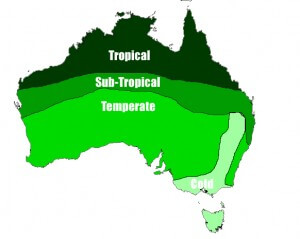
Tropical Climate Australia
Understanding the Tropical & Sub-Tropical Climate
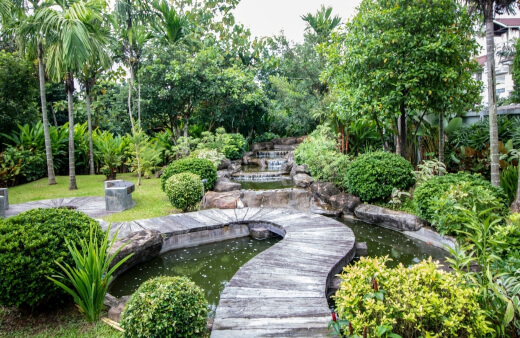
Today I want to give a bit of an explanation as to what makes a tropical climate so you can hopefully better understand the tropics, if you live in this region.


Get Your Free Guide:
Master Growing Australian Natives eBook
A Must Have Complete Guide for Every Australian Garden
Get Your Free Guide:
Master Growing Australian Natives eBook
A Must Have Complete Guide for Every Australian Garden
Now firstly, a disclaimer, I have not lived in the tropics myself so much of the information I am sharing about this particular region is from my own research and not through living and breathing the climate.
What is Tropical Climate?
Very generally, tropical climates are found around the equator, between the Tropic of Cancer (Northern Tropic) and the Tropic of Capricorn (Southern Tropic).
Within this zone there are variations of climate, with up to as many as 4 distinct zones, however this region can still be discussed as a whole and be generally correct.
Characteristics of a Tropical Climate in Australia
For this discussion I am focusing solely on the Tropical environments found in Australia.
As we are further from the equator, the Australian tropics experience slightly different conditions to countries that exist on and directly surrounding the equator. Some characteristics include;
- Generally 2 seasons, wet and dry season
- Wet season generally corresponds with ‘summer’ in the rest of Australia
- Cooler, drier winter
- High humidity all year round, though more so in the wet season
As I have said before, what people in Far North Queensland experience and what people living in towns bordering the temperate zone experience will be slightly different, but this does generally correspond to any tropical area of Australia.
Tropical Climate Effect on Gardening
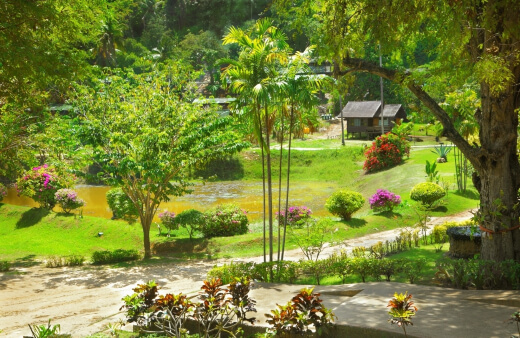
For plants to survive in the tropics they have to be able to handle lots of moisture. Lots of moisture in the air and often lots of moisture in the soil. As such, many plants which require really good draining soils will struggle in tropical climates.
There are also many fruits and vegetables, like banana’s and pineapples for example, which actually require a tropical environment to thrive. Try and grow a banana tree in a temperate zone, you may get it to grow okay but they will rarely produce a bumper crop.
Check out our guide on how to grow bananas and find out what factors affects its growth.
Another thing about tropical gardening is that a lot of tropical plants are used to either forming a canopy, or existing under a canopy. What does this mean?
In a forest there are many different layers of life and the word canopy refers to the upper most part, where the tops of the trees are. They form a ‘canopy’ over the forest, often either stopping or filtering the light from getting down below.
Some tropical plants CREATE this canopy and some need to live under one. Take a shrub that needs a canopy and plant it in the blazing sun in a temperate zone and it will wilt. Many ferns are an example of this.
This is a really basic explanation of a tropical climate but I hope it will help you understand your tropical garden, if you find yourself living in a tropical zone OR if you are doing your best to recreate a tropical zone in a different climate.
This is possible, just very challenging!
Temperate Climate Australia

Let us now discuss the climate that I know best, Temperate. This is because, technically, I have spent my 26 years living in temperate zones.
I say technically because I have spent my time in two very different places, one of which could just about be defined as a ‘cold’ climate (it would be on the border) and the other which is definitely very temperate.
What is Temperate Climate?
Temperate regions generally exist between the tropical regions (which exist between the tropics) and the colder regions, which are generally either close to or are influenced by the poles (or other things such as mountain ranges).
Another word for temperate is moderate and this is a fairly good description of a temperate zone.
Generally speaking, temperate zones don’t get really, really hot (he says as Perth exits a huge heat wave!) or really, really cold. They exist in the middle. Again, this is very general.
Characteristics of a Temperate Climate in Australia
- Hot, dry summers
- Cool, wet winters
- Generally 4 relatively distinct seasons, though the range in change may be small.
- Limited to no frost
What you experience in a temperate zone may differ from this, however as a general rule this can be followed with good success.
Temperate Climate Effect on Gardening
One of the major affects this has on gardening in temperate zones is the necessity of getting your garden ready for summer.
Most temperate zones in Australia experience a hot, dry summer and this can really take its toll on plants. Being able to provide some make-shift summer shade may be very important for your gardens survival.
It also makes mulching your garden all the more important. One of the big upsides, from my experience with Temperate gardening, is that you can actually get most things to grow.
Yes, there will be some native tropical plants that won’t do amazingly well outside of the humid conditions of the tropics, but even then they will often grow a little.
The four relatively distinct seasons of summer, autumn, winter and spring have a definite effect on gardening as well. Depending on the seasonal conditions, various plants will flower at different times.
Spring is a very common season in Australia for wildflowers to bloom. They pick up the warming weather as winter ends and start to bloom. These different seasons also provide conditions for fairly different vegetable crops.
To get broccoli to grow well, for example, you really have to plant them in autumn for a winter harvest. Planting them in spring will usually see them keel over when the summer sun starts to heat up.
As long as you choose your plants well, take note of how much sun they will get in summer, provide the appropriate shade and water, gardening in temperate zones is quite easy and fun!
Cold Climate Gardening
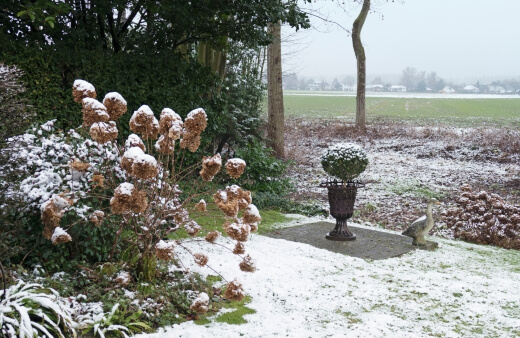
Though I have not technically lived in a ‘cold’ climate, the country town that I grew up in would be right on the border or temperate and cold, if it weren’t right on the coast (and therefore not needing a border line) with its climate regularly being compared to Tasmania, a cold climate.
As such, I have a pretty good grasp on how the cooler temperate location I grew up in would correspond to an actual cold Australian climate.
What is Cold Climate?
Cold climates are generally influenced by there proximity to either the North or South pole, though there are other things which can cause a colder climate, such as mountain ranges.
This is why there is a odd shaped cold climate region on the east coast of Australia, right around the great dividing range. The southern most part of the East Coast is also considered to be a cold climate.
What is considered a cold climate in Australia and what is considered a cold climate in other parts of the world does also vary but one of the main considerations for a place to be considered a cold climate is does it receive snow.
Now granted, the snow that cold climates receive in Australia is minimal compared to other places around the world, this is still a consideration.
This does not mean, however, that everywhere that is considered cold receives snow. Melbourne city rarely, if ever, receives snow but the mountain ranges in Victoria are covered.
Parts of Tasmania and also the Blue Mountains in NSW also receive big portions of snow, in general, throughout winter and this is partially why they are considered cold climates.
Characteristics of a Cold Climate
Here are some of the characteristics of a cool/cold climate in Australia;
- Warm, mildly wet summers (compared to Temperate regions)
- Cold, wet winters
- Frosts are pretty much guaranteed
- Some parts generally experience snow
Cold Climate Effect on Gardening
The key word for this climate is cold. If a plant is going to survive in a cold climate it has to be able to acclimatise to cold weather, pretty much meaning it must be able to survive frosts and many plants just can’t do this.
Plants which are native to and thrive in the hot, humid rainforests of the tropics are probably going to struggle if they have to cope with snow.
A lot of plants which thrive in cold conditions do so by dropping their leaves in winter and going into a dormant state. These plants are called deciduous plants.
Now, as Australia’s cold climate is actually quite mild in world comparisons, we have very few plants that are truly deciduous, but many do limit their growth throughout the cooler months.
This is mostly important if you want to plant shrubs or trees from other countries, deciduous shrubs and trees would likely do well in a cold climate.
A big upside to this climate is it generally experience more rain than does a temperate climate, which means plants don’t have to worry as much about conserving water.
As such, there are many varieties endemic to a colder climate which, though happy during the winter in a temperate zone, really struggle during summer due to the reduced rain fall, or, as is probably more true, rain fall over fewer days.
Much of Australia’s temperate zones receives as much rain as the cold area’s, they just receive it in big bursts where as colder climates often have more days of light rain.
Wrapping Up Our Guide on Australia Climate Zones
Hopefully this series has helped you to better understand the climate that you live in and will help you make good plant choices for your garden!
Published on March 15, 2011 by Gary Clarke
Last Updated on December 23, 2025


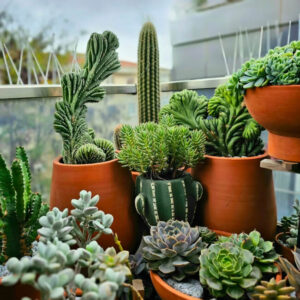

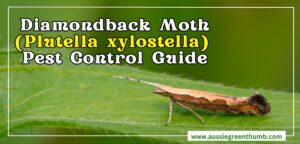
This is a good read for those who are just starting to garden, especially those in the temperate zones trying hard to plant tropical plants. Even if we are nearer the equator than Australia, our climate is just the same as that of the NOrthern Territory as in Darwin.